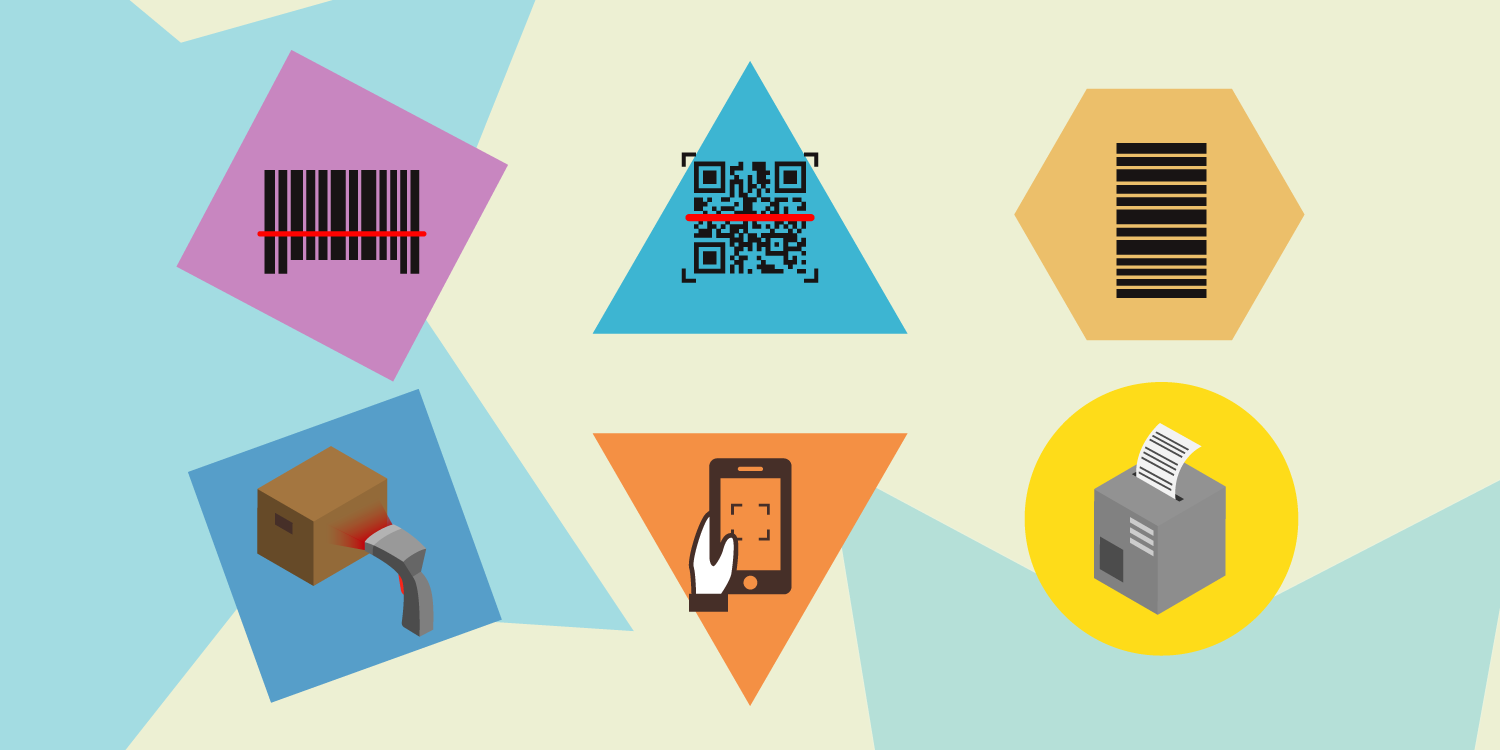
Terminology for Barcode Printing
Initially, barcodes represented data by varying the widths and spacings of parallel lines. These barcodes, now commonly referred to as linear or one-dimensional (1D), can be scanned by special optical scanners, called barcode readers. Later, two-dimensional (2D) variants were developed, using rectangles, dots, hexagons and other geometric patterns, called matrix codes or 2D barcodes, although they do not use bars as such. 2D barcodes can be read or deconstructed using application software on mobile devices with inbuilt cameras, such as smartphones.
Barcode Character
A single group of dots, bars or spaces, which represent unique numbers, letters, punctuation marks or other symbols.
Barcode Density
Barcode density is referring to the numbers or characters per inch.
Decodability
Measure of a printed barcode's ability to be deciphered accurately by a barcode reader.
Barcode Label
A label carries a barcode and is affixed to a paper or attached to a product package.
Barcode Symbol
A barcode symbol typically consists of five parts: a quiet zone, a start character, data characters (including an optional check character), a stop character, and another quiet zone. A barcode reader is used to read the code.
Bearer Bars
A minimum of two parallel bars running the length of the top and bottom edge of a barcode. Bearer bars, if used, reduce the probability of a misread when a skewed scanning beam enters and/or leaves the symbol through the top or bottom.
Bi-directional
Characteristic of some barcodes that allow decoding of the symbol regardless of whether scanned in a forward or backward direction.
Vertical Barcode
A bar code pattern presented in a vertical orientation. The individual bars are in an array appearing as rungs of a ladder.
Codabar
A bar code format in which four bars and three spaces represent the digits 0 through 9 and certain special characters. The code is characterized by four unique start/stop codes, variable inter-character spacing, and code density of up to 10 characters per inch.
Continuous Code
A barcode symbol where all spaces within the symbol are parts of characters. There is no inter-character gap in a continuous code.
Continuous Barcode Symbol
Barcodes, where the spaces serve as part of the character's definition of bars and spaces. There is no inter-character space in continuous codes.
Discrete Barcode Symbol
Refers to a type of barcode symbol, in which no information is contained in the width of the spaces between characters.
Interleaved Barcode
A bar code in which the characters are paired together with the bars representing the first character and the spaces representing the second character.
Ladder Code
A bar code printed in a vertical position such that the bars can be thought of as rungs on a ladder.
Stepladder Code
A bar code printed in a vertical position such that the bars can be visualized as rungs on a ladder.
Rotated Barcode
A bar code symbol where the lines are imaged in the opposite direction as the printing path. This is also referred to as a ladder or a rotated barcode.
Picket Fence Code
A bar code printed in a horizontal position such that the individual bars appear like the slates in a picket fence.
Self-Checking
A bar code or symbol using a checking algorithm which can be independently applied to each character to guard against undetected errors.
Start Character
A distinct character or pattern of bars used at the beginning of each bar code symbol, which provides initial timing references and direction of read information to the decoding logic.
Stop Character
A distinct character or pattern of bars used at the end of each bar code symbol, which provides initial timing references and direction of read information to the decoding logic.
Symbol Density
The number of characters per inch (cpi). Limited by the width of the narrowest bar or space.
X-Dimension
The average width of the narrow element in a bar code determined by the application and/or symbology specification.
Quiet Zone
The Quiet Zone is the area preceding the beginning of a bar code and following the end of the bar code, sometimes called the clear area.
Data Identifier
A character (or set of characters) that uniquely defines the specific use of the data or the general category of the data field encoded in the bar code symbol following it.
Zero Suppression
A technique used to shorten UPC codes by removing zeros from the bar code in a predetermined manner.
Contact Scanner
A barcode scanner that requires physical contact between the encoded medium and the scanner.
Flag Character
A character (or set of characters) that uniquely defines the specific use of the data or the general category of the data field encoded in the bar code symbol following it.
Human Readable Information (HRI)
The portion of a barcode that can be read and understood by humans.
First-Read Rate
First-read rate is a percentage of how often a code can be read successfully on the first scan.